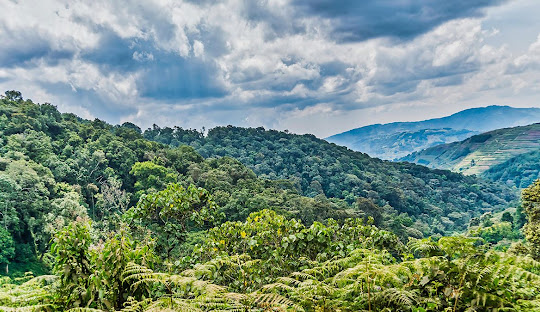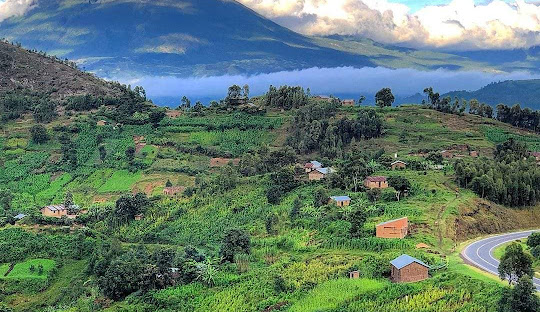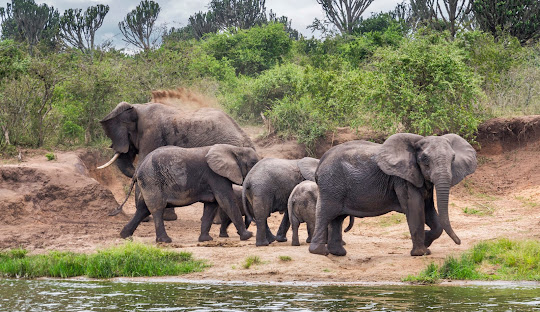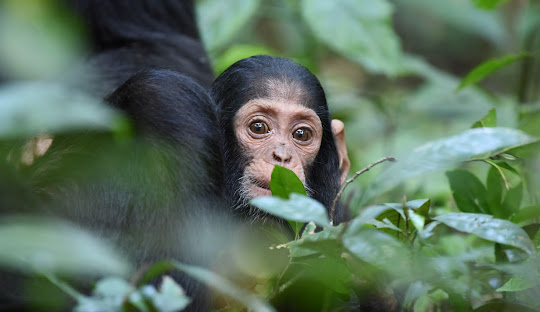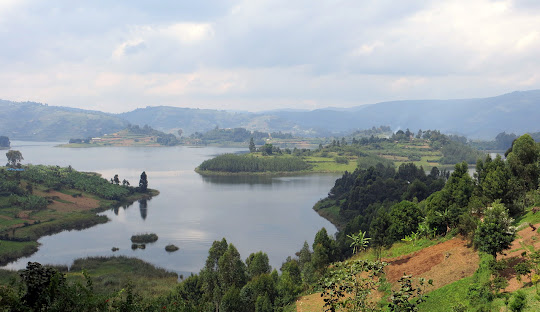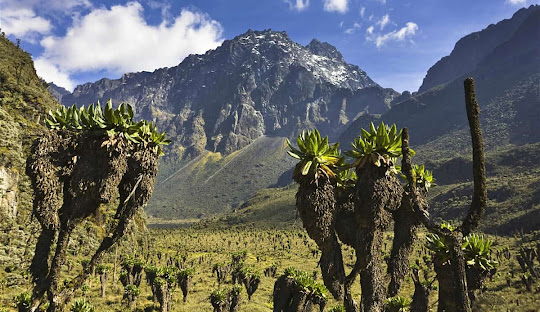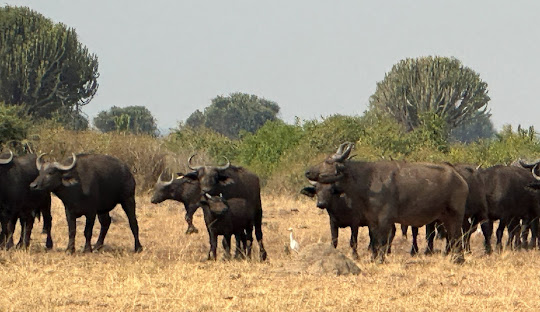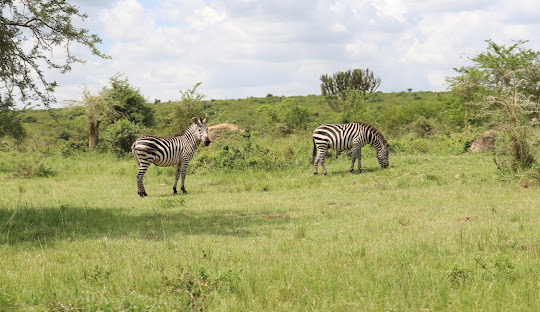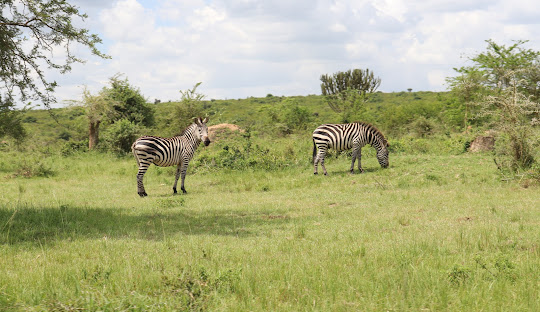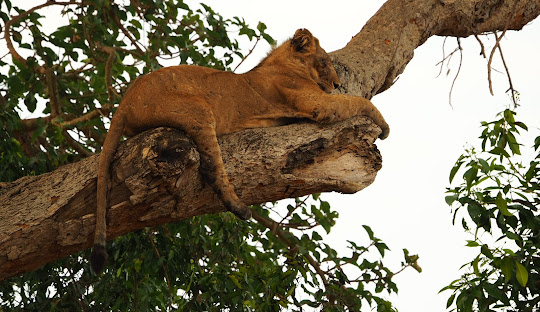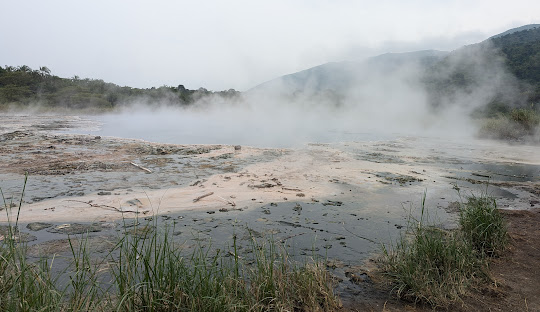About Uganda
Uganda is a landlocked country located in East Africa, bordered by Kenya to the east, South Sudan to the north, the Democratic Republic of the Congo to the west, Rwanda to the southwest, and Tanzania to the south. The southern part of the country includes a substantial portion of Lake Victoria, one of the largest freshwater lakes in the world. Uganda has a population of approximately 45 million people, with Kampala as its capital and largest city.
Uganda is celebrated as the Pearl of Africa, a title coined by Winston Churchill for its unmatched natural beauty, biodiversity, and welcoming culture. The country boasts rolling savannahs, misty mountains, dense forests, and vast lakes, making it one of Africa’s premier eco-tourism destinations.
Uganda, fondly known as the Pearl of Africa, is a land of breathtaking beauty, vibrant cultures, and boundless opportunities. Nestled in East Africa, this country offers a harmonious blend of natural wonders, cultural diversity, and warm, hospitable people. Among its many regions, Southwestern Uganda stands out for its rich heritage, stunning landscapes, and unique attractions.
Among its diverse regions, Southwestern Uganda is renowned for its spectacular landscapes, cultural richness, and abundant wildlife. This region, characterized by its hilly terrain and cool climate, encapsulates the heart of Uganda’s tourism and cultural identity.
Southwestern Uganda is a region known for its diverse landscapes, cool climate, rich culture, and significant contributions to Uganda’s economy, particularly in agriculture and tourism. It includes districts such as Rukungiri, Kanungu, Kabale, Kisoro, Mbarara, Bushenyi, Ntungamo, Rubirizi, Kiruhura Mitooma, Sheema, Rubanda, Rukiga, and others. The region shares borders with Rwanda, the Democratic Republic of the Congo (DRC), and Tanzania, making it an important area for trade and cross-border interactions.
Tourism Sites and Features in Southwestern Uganda
Southwestern Uganda boasts some of the most iconic attractions in Uganda, making it a must-visit destination for adventurers and nature lovers.
- Bwindi Impenetrable National Park: A UNESCO World Heritage Site, home to nearly half of the world's mountain gorillas. It offers unforgettable gorilla trekking experiences. Known worldwide for its mountain gorillas, Bwindi is home to almost half of the remaining population. Offers an intimate gorilla trekking experience that provides visitors a chance to come face-to-face with these gentle giants. Also a haven for birdwatchers, with over 350 bird species, including the rare African green broadbill. (See More https://ugandawildlife.org/national-parks/bwindi-impenetrable-national-park/)
- Queen Elizabeth National Park: Renowned for its tree-climbing lions in the Ishasha sector, scenic Kazinga Channel boat safaris, and diverse wildlife. Uganda’s most visited park is known for its stunning landscapes, including the Kasenyi Plains, Maramagambo Forest, and Kazinga Channel. Unique for its tree-climbing lions in the Ishasha sector and the spectacular boat cruises on the Kazinga Channel, which teems with hippos, crocodiles, and a plethora of birds. Home to over 95 mammal species and more than 600 bird species. (See more https://www.queenelizabethnationalpark.com/ )
- Lake Bunyonyi: Dubbed the "Lake of a Thousand Islands," this serene lake is perfect for canoeing, birdwatching, and relaxing retreats. A serene lake with 29 picturesque islands, perfect for canoeing, swimming (bilharzia-free), and cultural exploration. Dubbed the Switzerland of Africa, it offers breathtaking views of terraced hills and calm waters. https://en.wikipedia.org/wiki/Lake_Bunyonyi
- Mgahinga Gorilla National Park: Famous for gorilla trekking and the striking Virunga Volcanoes. Situated at the border with Rwanda and DR Congo, this park is famous for gorilla trekking, golden monkey tracking, and hiking the Virunga Volcanoes like Mount Muhavura and Mount Gahinga. A spiritual place for the Batwa, who offer visitors a glimpse into their ancient forest-dwelling culture. https://www.mgahinganationalpark.org/ https://ugandawildlife.org/national-parks/mgahinga-gorilla-national-park/
- Kigezi Highlands: Known as the "Switzerland of Africa," these rolling hills provide breathtaking vistas, making them a hiker’s paradise. The terraced hills of the highlands are a visual treat, offering excellent trekking opportunities and cultural immersion experiences with local communities. (see More https://www.volcanoesnationalparkrwanda.com/kigezi-highlands-the-tourism-hub-in-southwest-uganda/)
- Rwenzori Mountains National Park: Offers challenging treks to Uganda's highest peaks, with spectacular glaciers, waterfalls, and unique flora and fauna. Often called the Mountains of the Moon, the Rwenzoris feature snow-capped peaks, alpine vegetation, and glacial lakes. Ideal for experienced climbers seeking to conquer Uganda’s highest point, Mount Stanley’s Margherita Peak. (See more https://ugandawildlife.org/national-parks/rwenzori-mountains/)
- Lake Edward: one of Africa’s Great Lakes, straddles the border between Uganda and the Democratic Republic of Congo, lying partly within Queen Elizabeth National Park. It is a critical ecological and economic asset in Southwestern Uganda. Biodiversity: The lake supports a rich ecosystem, serving as a habitat for numerous fish species, aquatic birds, and other wildlife. Scenic Beauty: Surrounded by the rolling savannahs of Queen Elizabeth National Park and the majestic Rwenzori Mountains, Lake Edward offers picturesque landscapes perfect for photography and nature exploration. Tourist Activities: Activities around the lake include birdwatching, boat cruises, and nature walks. Visitors often spot hippos, crocodiles, and a variety of waterfowl. (See More https://en.wikipedia.org/wiki/Lake_Edward)
- Rwenshama Fishing Village: Located on the shores of Lake Edward, Rwenshama Fishing Village is a vibrant community where fishing is the primary economic activity. Fisherfolk use traditional methods, such as dugout canoes and nets, to harvest fish like tilapia, Nile perch, and catfish. Visitors can explore the bustling fish market and interact with the local community to learn about their way of life. Conservation challenges such as overfishing are being addressed through government and NGO initiatives to promote sustainable fishing practices. (See More https://infrastructure.go.ug/landing-sites/)
Culture and Indigenous People
Southwestern Uganda is home to diverse ethnic groups, each with a rich cultural heritage.
The Bakiga:
Primarily residing in Kabale, Rukuga, Rubanda, Kanungu, Rukungiri, and Kisoro, the Bakiga are known for their industriousness and expertise in terraced farming. Known for their resilience and agricultural ingenuity, they inhabit the highlands and celebrate traditional dances like the "Ekitaguriro." Their traditional dance, Ekitaguriro, is an energetic and rhythmic expression of their identity. The Bakiga cuisine includes delicacies like ekitobeero (sorghum porridge) and omuramba (local beer).
The Banyankole:
- Famed for their long-horned Ankole cattle, they are known for their pastoral traditions and the warm “ekyooto” (fireplace gatherings). Renowned cattle herders of the Ankole Kingdom, are famous for their majestic long-horned Ankole cattle. The Banyankole culture revolves around milk products such as eshabwe (ghee sauce) and milk curds. They are also celebrated for their elaborate marriage customs and stories of the Ankole kingship.
The Bafumbira:
Bafumbira is an ethnic group of people from Kisoro District in Southwestern Uganda, known for their vibrant dances, clothing, and economic activities. They speak Rufumbira, a dialect related to Kinyarwanda and Kirundi, and are skilled agriculturalists, rearing goats, sheep, and cattle. They are also involved in local trade and cultural tourism. The Bafumbira are connected to the Virunga Volcanoes, a chain of volcanic mountains shared by Uganda, Rwanda, and DR Congo. They are also involved in gorilla conservation and cultural tourism. The Bafumbira face challenges such as land scarcity, climate change, and limited infrastructure, but through community cooperation and adaptation, they continue to thrive and maintain their cultural identity.
The Batwa:
An indigenous forest-dwelling community, often called "the keepers of the forest," who have unique traditions and ecological knowledge. Indigenous hunter-gatherers who once lived in the forests of Bwindi and Mgahinga. Offer cultural encounters like the Batwa Trail Experience, where visitors can learn about their traditional hunting techniques, songs, and dances.
The Banyabutumbi People:
The Banyabutumbi are an ethnic group native to Southwestern Uganda, primarily found around Lake Edward, the Rwenzori Mountains, and parts of Kasese and Bundibugyo Districts. This vibrant community has a rich cultural heritage deeply intertwined with the natural environment, making them an integral part of the region's ecological and cultural landscape.
Economic Activities
The economy of Southwestern Uganda revolves around both modern and traditional practices, shaped by the region's geography and climate. The economy of Southwestern Uganda is predominantly agrarian, with communities engaged in the following:
Agriculture:
- Cultivation of major crops includes bananas (matooke), coffee, tea, fruits, and Irish and sweet potatoes dominates, alongside subsistence farming of maize and beans.
- Tea estates, particularly in areas like Kanungu and Kabale, contribute significantly to Uganda’s exports.
- Subsistence farming ensures food security for most households.
Pastoralism:
- The Ankole cattle are a cultural and economic symbol, providing milk, beef, and hides. Communities also rear goats and sheep, complementing agriculture. Rearing Ankole cattle, goats, and sheep is a significant activity, providing milk, meat, and hides.
Tourism:
The region thrives on eco-tourism, attracting thousands of visitors to its national parks and cultural sites. A leading economic activity in the region, generating employment and revenue through eco-tourism lodges, guides, and cultural activities.
Handicrafts:
Communities produce intricate crafts like baskets, beads, and mats, often sold to tourists as souvenirs. Production of handcrafted items such as woven baskets, mats, and wooden carvings is widespread, and often tied to women’s empowerment programs.
Vulnerabilities and Access to Social Services
Southwestern Uganda is vibrant and full of potential, but it faces socio-economic challenges that hinder development.
Health: Limited access to healthcare infrastructure in rural areas, Common health issues are compounded by high rates of preventable diseases like malnutrition, malaria, and waterborne illnesses and inadequate maternal health services. Government and NGOs are working to improve healthcare through outreach programs.
Education: Many children struggle to access quality education due to poverty and inadequate infrastructure. While primary education is free, many rural schools lack teachers, learning materials, and proper facilities. Secondary education often requires fees, making it inaccessible for many families.
Poverty: Despite Southwestern Uganda's rich agricultural potential, high poverty levels continue to hinder the region's development, making it difficult for families to afford essential services such as healthcare, education, and clean water. While the region is known for its agricultural productivity, with crops like maize, beans, bananas, and vegetables grown abundantly, many households still struggle to escape poverty. This is primarily due to the challenges of low market access, which limits farmers' ability to sell their produce at competitive prices. Additionally, the lack of value addition to raw agricultural products means that farmers are unable to capitalize on the higher profits that come from processing or packaging their goods. As a result, most rural households are left with little income to improve their living conditions. The absence of infrastructure, such as better roads, storage facilities, and processing plants, further exacerbates these issues, leaving much of the produce to spoil before it can reach the market. Furthermore, limited access to financial services and capital makes it challenging for farmers to invest in modern farming techniques or expand their businesses. Consequently, despite the region's agricultural abundance, poverty remains pervasive, and rural communities are left unable to fully benefit from the resources they have. To break this cycle, there is a critical need for improved market access, infrastructure development, and value-added agricultural initiatives that can empower local farmers and provide them with sustainable income-generating opportunities. This would help raise living standards and reduce the impact of poverty on families, allowing them to access essential services and improve their overall well-being.
Infrastructure: Remote areas of Southwestern Uganda are often hindered by poor infrastructure, particularly in terms of road networks, which significantly limit access to markets and essential services. The region's hilly terrain exacerbates these challenges, making it difficult to transport goods to urban centers or rural markets where farmers can sell their produce. This not only affects the livelihood of agricultural families but also restricts their ability to access critical services such as healthcare and education. Inaccessible roads prevent the timely delivery of medical supplies and hinder residents from reaching healthcare facilities in emergencies. Similarly, children in these areas often face long, unsafe journeys to schools, which can impact their education. The lack of proper roads further isolates these communities, limiting their opportunities for economic growth and access to services, and deepening their vulnerability to poverty and social exclusion.
Climate and Environmental Challenges
Southwestern Uganda’s climate is predominantly temperate, with rainfall supporting agriculture. However, the region faces growing environmental concerns:
Deforestation: Driven by the need for firewood, agriculture, and settlement expansion, it threatens biodiversity. Forests are cleared for farming, charcoal, and firewood, reducing biodiversity. Conservation programs like those in Bwindi aim to combat this.
Soil Erosion: Over-cultivation on steep slopes leads to significant soil degradation. Over-cultivation and farming on steep slopes without terraces exacerbate soil erosion, threatening agricultural productivity.
Climate Change: Unpredictable rainfall patterns are affecting agriculture and water resources, disrupting livelihoods. Unpredictable weather patterns disrupt traditional farming schedules, impacting yields and livelihoods. Sustainable farming practices are being promoted to adapt to these changes.
Human-Wildlife Conflict: The expansion of agricultural land into protected areas often brings communities into conflict with wildlife. Expanding agricultural areas encroach on wildlife habitats, leading to conflicts, especially near national parks.
Eco-Tourism Highlights
Lake Edward: Nature’s Masterpiece
- Nestled within Queen Elizabeth National Park, Lake Edward offers unparalleled scenic beauty, framed by the Rwenzori Mountains and rolling savannahs.
- Take a tranquil boat cruise to witness hippos, crocodiles, and vibrant birdlife, including kingfishers and African fish eagles.
- Enjoy guided eco-tours to learn about the delicate ecosystems that sustain the lake’s aquatic life and surrounding wildlife.
Rwenshama Fishing Village: Community and Culture
- Visit the vibrant Rwenshama Fishing Village, where locals rely on the lake’s bounty for their livelihoods.
- Watch as fishermen skillfully use traditional methods to harvest tilapia and Nile perch, or explore the bustling fish market.
- Engage in interactive experiences, such as learning how fish are processed or participating in a traditional cooking session using freshly caught fish.
Healing Hot Springs
The hot springs of Southwestern Uganda are a natural marvel, combining scenic beauty, cultural heritage, and therapeutic benefits.
Ihimbo Hot Springs
The surrounding forest is a haven for biodiversity, offering opportunities for primate tracking and birdwatching.
Located in a serene part of Rukungiri District, Ihimbo is cherished for its healing waters and peaceful ambiance.
Visitors can relax in the warm mineral-rich waters, believed to provide relief for skin ailments and joint pains.
The springs are surrounded by lush greenery, perfect for a quiet retreat or nature photography.
Visitors can cook eggs or tea in the bubbling pools while learning about the cultural myths and spiritual significance of the springs to the local people.

